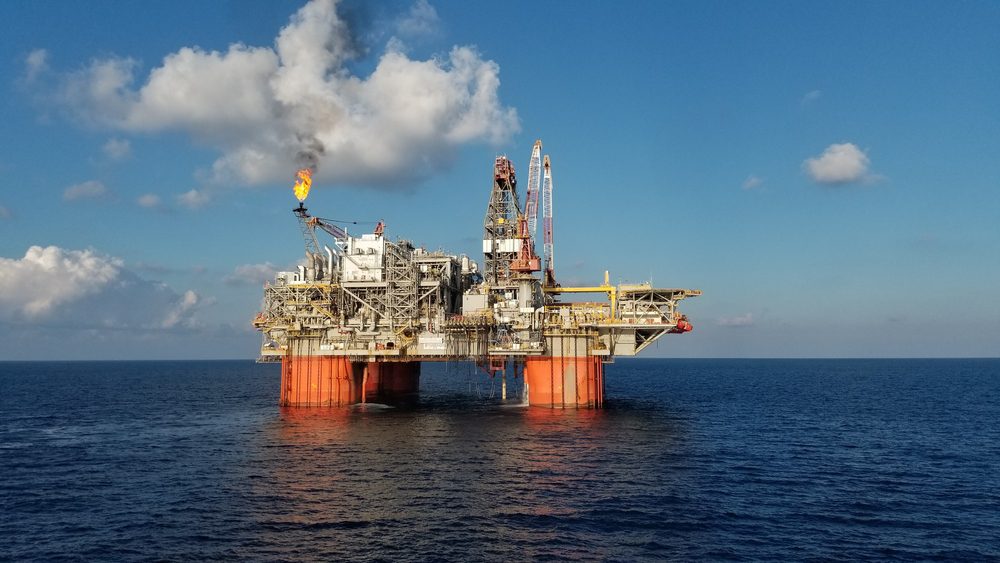If you, like us, have been sucked into Amazon Prime’s new show The Rig, but come away with more questions than answers about how offshore oil drilling works, then you’ve come to the right place, as we break down what goes on on an offshore oil rig. Spooky infectious fog not included.
Once a deposit of oil has been found deep under the seabed via geological survey and satellite imaging and the necessary permits obtained, deep-sea mobile offshore drilling units (MODUs) will start boring down into the Earth under the seafloor. There are four main types of these MODUs that can be used, depending on the sea conditions and depth of the ocean floor.
- A submersible or a barge MODU has steel posts on deck to support the drilling platform. These are most used at around 9-10.5 meters (30-35 feet) deep in calm waters, as the barge rests on the seafloor.
- A jackup is a rig on a floating barge. The rig is suspended or “jacked” above the hull of the boat. The legs extend down to the sea floor, but don’t usually penetrate it. This type of rig is used at around 160 meters (525 feet) deep.
- A drillship is a vessel that has a drilling rig on top and a hole in the hull that the drill goes straight through into the sea floor. They can operate at deep depths of up to 3.7 kilometers (12,000 feet).
- Semisubmersibles float on the surface, and some can be converted from drilling to production rigs once the oil is found. They can be secured using anchors and chains that can be controlled to account for drift.
Once the initial well has been dug by the MODU, a more permanent structure called a production rig will usually be built on top, to capture the oil. In some cases the MODU will be converted into a production rig for oil capture rather than a rig for drilling.
These rigs can be enormous engineering structures that are sometimes brought thousands of miles by boat to be fitted at sea. The world’s largest offshore drilling platform, Berkut, weighs over 200,000 tonnes and is located off the Russian Pacific coast.
Production rigs vary in size and technical aspects with the depth of the ocean and the sea conditions, but largely function in the same broad way.
Some types of production rig are attached to the sea floor via cables and anchors; some are fixed using tall towers; and other rigs have floating pontoons to support the weight of the rig. More modern production rigs use dynamic positioning systems to keep them stable, and may even have propellers under their pontoons to allow the rig to move locations.
The pipelines down from the top of the rig to the ocean floor can be several hundreds of meters, taller than any skyscraper on Earth. Production rigs may also have a flare stack, a flame that burns off waste gas that is collected as the petroleum comes up from the sea floor. Offshore rigs usually also have helipads, living quarters and lifeboats for the crew that work on them, who often stay on the rig away from home for weeks at a time.

The Thunder Horse Platform is an example of a semisubmersible production rig – the flare stack is clearly visible in this shot. Image credit: Matt Gertson/Shutterstock.com
For the extraction process, the drill bit is passed through a steel pipe onto the ocean floor, where gradually, in stages, narrower drill pipes are used to create a drill string leading to the oil. These pipes can be encased in cement or fitted with steel casings to make them more stable.
This drilling process can last many months or even years before the rig can be converted to a production rig. Rigs have a hoisting system to raise and lower the drill pipe. Safety measures, such as a blowout preventer that is usually fitted to the top of the well on the ocean floor, can help control the flow of oil and gases coming up through the Earth’s surface. Pumping systems are often used to clear mud out of the drill string, or in later stages help pressurize the oil to flow upwards.
Once oil rig platforms have reached the limit of their commercial lives and are deemed no longer profitiable, some are dismantled and taken away. Others, however, have found a new purpose in rigs-to-reef programs, which provide artificial reefs for marine life.
Source Link: How Do Offshore Oil Rigs Actually Work?